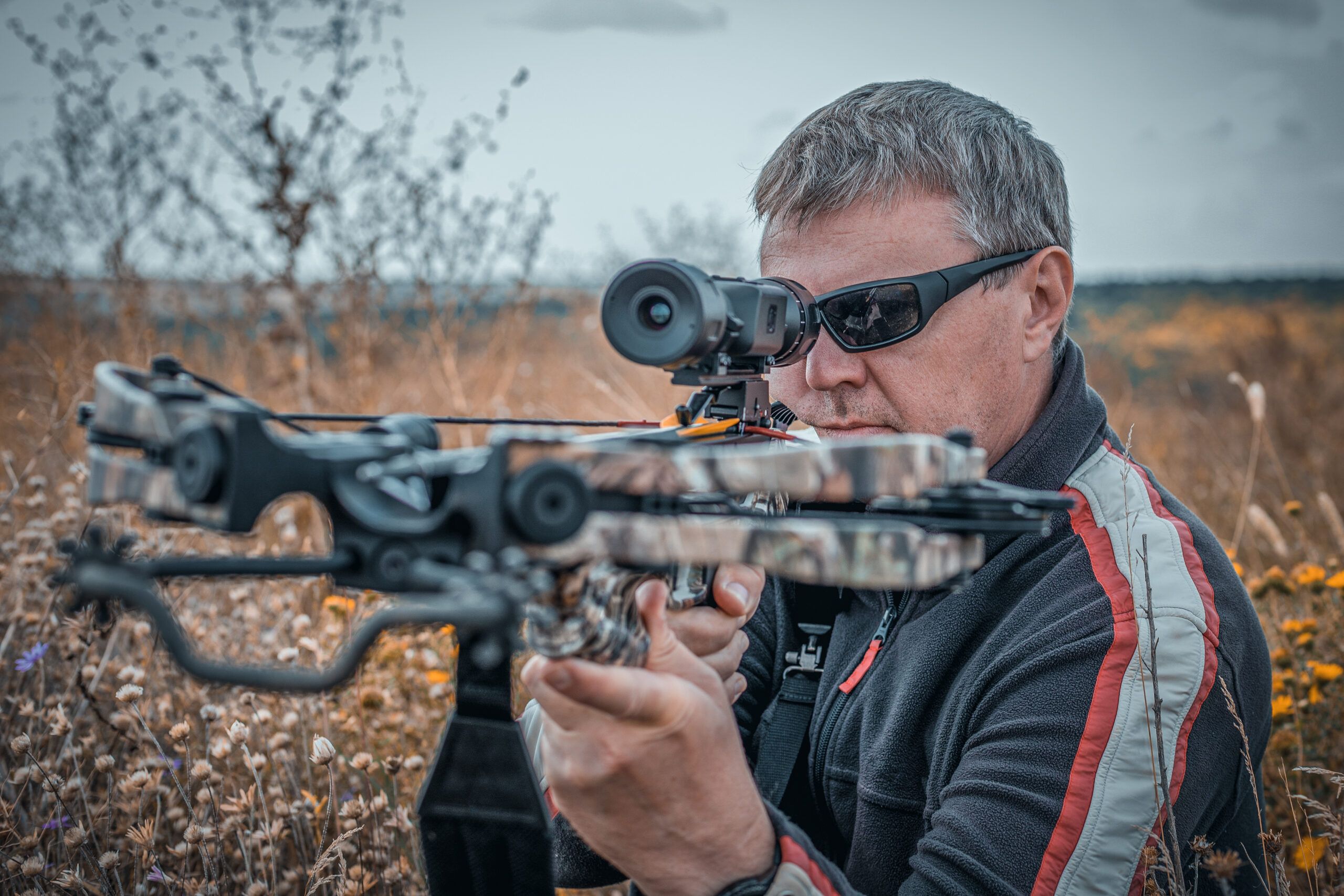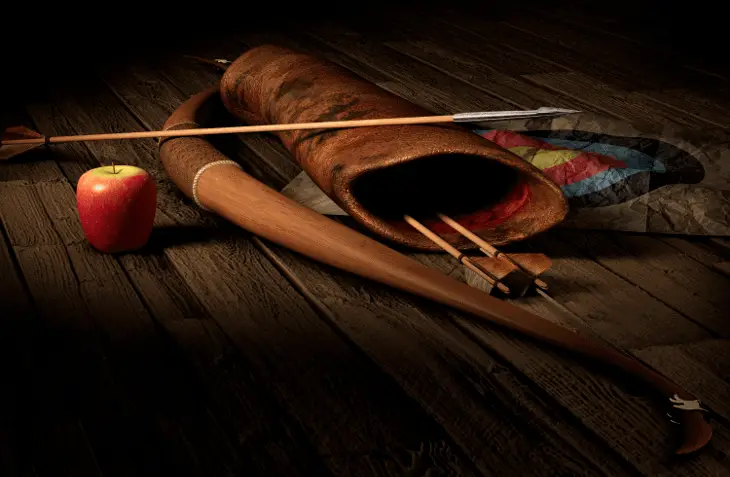Note: Our site links to archery and bowhunting products sold by outside vendors, and we may earn a small commission if you purchase an item after clicking one of these links. Learn more about our affiliate program.
If you’re interested in tuning your bow yourself, you’re likely a fan of DIY. While you could take it into your local archery shop, there’s something about working with your own hands in your own workshop that then makes hitting the bullseye or the kill zone that much more satisfying.
Similarly, why buy a draw board for your archery workshop (which you can certainly do!) when you can do it yourself. Both practical and fun, these are three of our favorite archery draw boards and how to make your own.
What Is a Drawboard?
A drawboard is a device bowyers and archers use to measure and tune the draw weight and draw length of their bows as well as align and synchronize the cams. While it may have other features, the most important part of a drawboard is the winch and pulley. Using this winch and pulley, you can draw the bow and keep it drawn while you make adjustments.
Basic Archery Draw Board
A basic archery draw board is the simplest option. It really only has three parts: the base, an anchor to hold the bow, and the winch and pulley to draw it. Professional options may come with a bow scale, and you can also add one to your own DIY version.
Evercatch Archery Draw Board
- Draw Board for Compound Bow for tuning your bow to perfection
- Adjust your timing, draw length and cam lean
- Compatible with most bow press
If you’re just looking for a basic archery draw board, the Evercatch Archery Draw Board is great because it comes with everything you need while still incorporating some DIY fun and versatility. You get the winch and pulley along with a padded anchor for a compound bow, but you can attach this to any workshop board on your own, which allows you to adapt its length to your bow.
Although the full DIY option below is rewarding, there’s a big advantage to the Evercatch draw board: you know it’ll work with a compound bow. It’s especially convenient that the winch already comes with a miniature carabiner that easily attaches to your bowstring.
DIY Basic Archery Draw Board
Materials:
- Plywood or MDF board (roughly 24″x12″x3/4″)
- 1 winch and pulley with handle and strap
- 2 heavy-duty L-brackets
- 4 wood screws
- 2 bolts with nuts and washers
- Drill and drill bits
- 1 floor flange (sized to fit the galvanized pipe)
- 1 galvanized pipe (approximately 6-8 inches long, sized to fit the floor flange)
- 1 carabiner
- Rubber hose cut to length of galvanized pipe (optional)
Instructions:
- Attach the L-brackets to the base of the plywood: Using wood screws, attach the L-brackets to the lower half of the plywood, around two inches from the bottom edge. These brackets will support the winch.
- Attach the winch to the L-brackets: Attach the winch to the L-brackets using the bolts, nuts, and washers. Attach one of the carabiners to the winch’s hook or the end of the cable if it doesn’t include one.
- Install the flange and pipe: Drill a hole in the center of the plywood about two inches from the top edge. Use the wood screws to attach the floor flange to the plywood over the drilled hole. Screw the galvanized pipe into the floor flange. This will serve as the bow holder. If you are installing the optional rubber hose, now is the time to slide it over the pipe. This will protect the bow.
- Tune your bow: Now you’re ready to go. Simply hook the bow over the pipe and hook the carabiner to your string loop. Carefully draw the bow by cranking the winch, but don’t overdo it as you might damage the bow. Once drawn, you can check the synchronization of the cams and cables.
Adjustable Archery Draw Board
An adjustable draw board is similar to the basic version, but it has an adjustable slider so you can set it to more accurately measure various types and sizes of bows. In other words, it’s a good choice if you work on multiple bows or are interested in amateur bowery.
Mssoomm Square Linear Guideway Rail + Mssoomm Ballscrew
- HGW15 linear guide rail set includes 1Pcs HGW15-1000mm(39.37 inch)linear guide rail and 2Pcs HGW15CA flange type carriage bearing blocks, easy to assemble and interchangeable with other square linear rail kit, for example, the HGH HGR 15 linear rail kit
- The guide rail is made of high-quality high-carbon steel, using quenching and tempering technology, long-term wear resistance, super stability, Strong bending resistance, difficultly deformed and twisted, ensuring linear motion
- Adopt Goethe-style four-point contact design, which can withstand loads evenly in all directions ( up down and left right) and self-aligning function, can absorb the assembly error of the mounting surface, with high precision under high load
- Ball screw diameter: 12mm; Lead / Pitch: 4mm; Total length: 19.69 inch / 500mm; with no end processing. Precision C7 Grade
- Long service life time due to low friction, low operation noise; No stick-slip effect, heats up less, reduce driving power required
- Small starting torque, able to apply high speed and micro-feeding; High static and dynamic stiffness, high and more accurate positioning
The most important part of an adjustable archery draw board is the slider. There are tons of sliding rail systems on the market, but finding one that’s compatible with a specific floor flange is a bit harder. We recommend these two Mssoomm products because they’re compatible and also tough enough to handle high-powered compound bows. Just slide a hose or foam over the screw to protect the bow and its finish.
DIY Adjustable Archery Draw Board
Materials:
- Plywood or MDF board (roughly 24″x12″x3/4″)
- 1 winch and pulley with handle and strap
- 2 heavy-duty L-brackets
- 4 wood screws
- 2 bolts with nuts and washers
- Drill and drill bits
- 1 floor flange (sized to fit the galvanized pipe)
- 1 galvanized pipe (approximately 6-8 inches long, sized to fit the floor flange)
- 1 carabiner
- Rubber hose cut to length of galvanized pipe (optional)
- 1 sliding rail system and matching screws
Instructions:
Constructing your own adjustable archery draw board is similar to constructing a basic archery draw board with one main difference: you attach the flange into the slider of the sliding rail system rather than directly into the plywood base. In other words:
- Attach the L-brackets to the base of the plywood: Using wood screws, attach the L-brackets to the lower half of the plywood, around two inches from the bottom edge. These brackets will support the winch.
- Attach the winch to the L-brackets: Attach the winch to the L-brackets using the bolts, nuts, and washers. Attach one of the carabiners to the winch’s hook or the end of the cable if it doesn’t include one.
- Attach the sliding rail system: Using the wood screws, attach the rail system to the top edge of the plywood. The rail should run parallel to the top edge of the board.
- Attach the floor flange and galvanized pipe to the slider component of the rail system: Use screws matching the slider component of the rail system to install the flange. Screw the galvanized pipe into the floor flange. This will serve as the bow holder. If you are installing the optional rubber hose, now is the time to slide it over the pipe. This will protect the bow.
- Tune your bow: Now you’re ready to go. Simply hook the bow over the pipe and hook the carabiner to your string loop. Carefully draw the bow by cranking the winch, but don’t overdo it as you might damage the bow. Once drawn, you can check the synchronization of the cams and cables.
Digital Archery Draw Board
Aside from tuning the cam system and cables, many archers use an archery board to measure and adjust draw weight and draw length. To do this, you’ll need to install a yardstick to measure draw length and a digital scale to measure draw weight.
KG Heavy Duty Digital Bow Scale
- Wide Range Of Uses: Portable, Versatile, Force gauge, compound bow tension draw weigh, home garage, fishing, hunting, farming, postal shipping. Kgs, lbs, newtons hold modes. Handheld hard hooks. This scale can be a great gift for father's day or dad's birthday. Perfect for weighing Luggage before travel
- Easy To Use And Handle: Insert batteries, set up pound - kg, hang the hook. Balance crane scale weights animals - pig, hog, deer, buck, fishes over 50lb, 100lb, 600lb (game animal).
- High Precision Weight Sensors: 1 to 50 200 400 600 660 lb (1kg - 300kg) measuring ability. Calibrated accuracy of electronic scales. Can pull max of 660lbs load. Graduation increments of 0.2lb or 0.1kg.
There are a lot of different digital bow scales, but the ideal one for a draw board is the KG Heavy Duty scale because it has the correct design to attach to the winch on one side and the bowstring on the other. Plus, it’s sensitive enough to finetune your bow and note minute differences in draw weight.
DIY Digital Archery Draw Board
Materials:
- Plywood or MDF board (roughly 24″x12″x3/4″)
- 1 winch and pulley with handle and strap
- 2 heavy-duty L-brackets
- 4 wood screws
- 2 bolts with nuts and washers
- Drill and drill bits
- 1 floor flange (sized to fit the galvanized pipe; with screw holes matching the rail system’s slider)
- 1 galvanized pipe (approximately 6-8 inches long, sized to fit the floor flange)
- 1 carabiner
- Rubber hose cut to length of galvanized pipe (optional)
- Digital bow scale
- Yardstick
- 1 sliding rail system and matching screws
Instructions:
To build your own digital archery draw board, simply follow the above instructions for a basic archery draw board. At the end, you’ll install the scale and yardstick:
4. Install digital bow scale and yardstick: Simply hook the scale into the winch’s carabiner. As for the yard stick, use wood glue to secure it centered on the plywood running from the flange towards the winch. (Important: Because draw length is measured from the riser, you will have to cut off an amount of length from the yardstick equal to the diameter of the flange.)
5. Tune your bow and measure draw weight and draw length: Now you’re ready to go. Simply hook the bow over the pipe and hook the bow scale to your bowstring. Carefully draw the bow by cranking the winch, but don’t overdo it as you might damage the bow. Once drawn, you can check the synchronization of the cams and cables. You can also note the draw weight on the bow scale and the draw length on the yardstick.
Here is a video for any extra help you may need:








